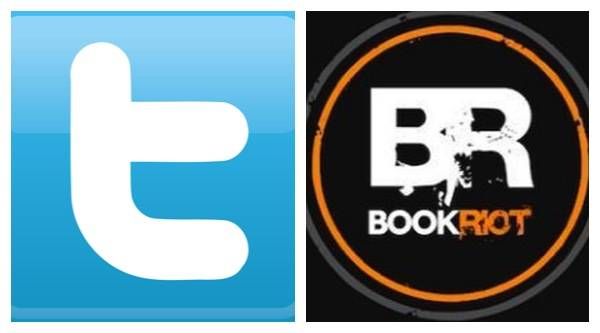
Black History Books for the Whole Year (Because 28 Days Are Not Enough)
February was Black History Month in the U.S. That usually means that most Americans spend 28 days hearing a little bit about black history–about Martin Luther King, about Harriet Tubman, about the Tuskegee Airmen and Langston Hughes–and then 337, well, not hearing much of anything about it. Black history gets smushed into the shortest month of the year and left unexplored and confronted for the rest.
That’s why #28daysarenotenough.
Started by author and artist Joel Christian Gill, #28daysarenotenough is a social media movement encouraging people to learn and talk about black history “365 days out of the year,” as he explained to the Philadelphia Tribune:
What is it when we finally separate our history out from all the other histories of the world? When we separate LGBTQI, Latino history or women’s history…[?] Who fought and died for America more than the enslaved people of the United States? People who risked everything just so they could make their own choices? And so, when you take that and look at it, 28 days aren’t enough to talk about that.
I agree. Which is why I developed this reading guide to reading black history for the other 337.
Here’s the plan: for each month, I’ll suggest a book or two (sometimes thematically tied to that month, sometimes not; sometimes formal history, sometimes not) that explore different aspects of black history. This isn’t a prescription; there aren’t rules and there’s no right way to go about this. But if you think that #28daysarenotenough, this guide is one way you can try to fix it, to make black history part of your life not just for 28 days but for 365 and beyond.
MARCH
March usually marks the beginning of the rest of the year, the time when we don’t talk about black history very much. The 28 days are over, and that’s that. And we’ve usually heard a whole lot about the big names in black history, the Kings and the Tubmans, for the four weeks prior. So what better way to kick off a year of refusing that division–refusing the end of black history–than by focusing on little-known figures and often-ignored cases? (Another bonus: both of these books are graphic histories, a small but totally amazing sub-genre.)
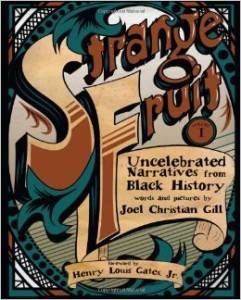
This is an especially appropriate book to start your year’s worth of black history reading because its author is the one who started the #28daysarenotenough hashtag. It’s also an exciting, fascinating book: a graphic exploration of little-known people and events in black history. Covering a wide range of topics, from the first black stage magician (!) to letters written by a former slave, Strange Fruit manages to be both a whole lot of fun and a serious examination of black history and mainstream ignorance.
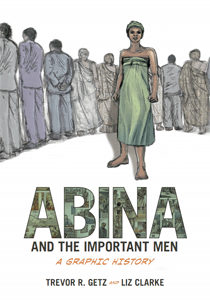
Based on a young woman’s 1876 suit for freedom, Abina and the Important Men tells a fascinating story with lot to teach us about how gender, colonialism, and slavery interacted in one woman’s life and in the history of our world. With its emphasis on how historical documents both record and erase the past, this book is rigorous and accessible at the same time, and it’s a great way to start exploring black history as world history.
APRIL
April has often been a month of major, important shifts in African American history. The Civil War formally began on April 12, 1861, for example, and Martin Luther King was assassinated on April 4, 1968. This month, read books that are related to these two events.
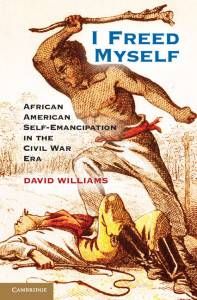
One of the most important transformations that historical scholarship on the Civil War has undergone in the last decades has been a shift toward recognizing the active roles that slaves played in freeing themselves. They weren’t just passive figures, waiting for the great white Lincoln to save them. Instead many escaped and resisted during the war in ways that changed their own lives and forced Lincoln to more actively pursue the end of slavery in America. Williams’s book is one of a number of recent volumes to explore this crucial, often-overlooked history.
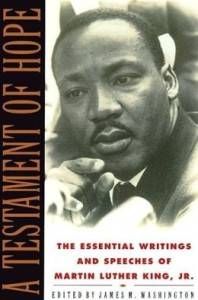
Most of us have heard or read at least parts of King’s “I Have a Dream” speech or “Letter from a Birmingham Jail.” And that’s great, but King wrote a lot more than that, much of it collected in this volume. Explore the depth and complexity of King’s thought as you experience the beauty and urgency of his writing.
MAY
It was in May, 1954, that the legal architecture of Jim Crow–the doctrine of “separate but equal”–was struck down by the U.S. Supreme Court in Brown v. Board of Education. So for May, here are a couple of books on the history and present of segregation in America.
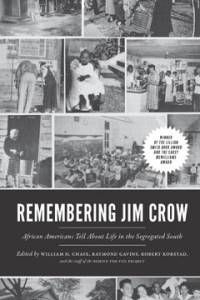
Oral history is an especially powerful medium for recording and telling black history–it lets the people who lived the past speak for themselves while using the historian’s eye to shape a larger narrative out of myriad individual stories. And Jim Crow is especially well-suited for the oral history treatment. Jim Crow was a legal system but it wasn’t just that. It was a total social structure that infiltrated and influenced every aspect everyday life in the South (from work to recreation to sexuality to commerce and beyond). It makes special sense, then, to hear directly from people who lived through it. This incredible volume, drawn from collections held at Duke University, does just that and more.
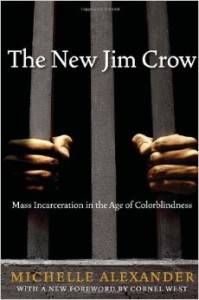
Legal segregation supposedly ended in 1954 (or 1964, or…), but as Alexander argues here, racial segregation didn’t end–it just changed forms. Focusing on mass incarceration and the massive growth of the prison-industrial complex, Alexander puts the present in the context of the past and the future, a task undertaken by the best black history books and one that helps us make better sense of the world around us. This is the history of now.
JUNE
Black feminism absolutely is central to black history, so in June we explore its depth and diversity. For your second book this month, pick one of the women featured in Words of Fire and read a book by or about her.
Words of Fire: An Anthology of African-American Feminist Thought by Beverly Guy-Sheftall (editor)
I was assigned this book in a college course, and I’ve genuinely never been the same. The title isn’t an exaggeration–these are words that sear and burn and light. Collecting thinkers from Maria Stewart and Sojourner Truth to bell hooks and Barbara Smith, this anthology captures the wide range and incredible diversity of black feminist thought over the past centuries.
JULY
In addition to fireworks, hot dogs, and patriotic bunting, July is also a time when we celebrate freedom. That celebration has always been more fraught for African Americans–“What to the Slave is the Fourth of July?” Frederick Douglass famously demanded–on whose bondage the “land of the free” was built. For this month, we’ll tackle freedom from two directions: first, by looking at how race and slavery helped create what became the United States; and second, by exploring one way black Americans tried to make freedom for themselves in difficult circumstances.

First off: the title. That’s reason enough to read this book, but there’s actually many more reasons. It’s a hugely respected examination of the way gender and race interacted with and influenced one another in colonial Virginia. You’ll learn about how gender ideologies helped create “race” as we know it today, leading to race slavery (a good foundation for next month’s reading) and to the transformation, in turn, of how gender worked, as well. Brown’s masterful treatment about how Bacon’s Rebellion changed the fate of what became the United States, consolidating a white patriarchal elite, is among the important arguments any historian of early America has made in the past few decades.
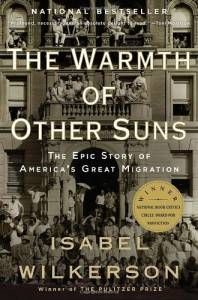
The list of awards this book won is long, but even that doesn’t quite cover how important this book is. The Great Migration–the movement of millions of African Americans from the South to the North, especially industrial cities, from the 1910s to the 1960s–is one of the most important events in black history, but it gets way less attention than many others. Wilkerson’s book is helping to change that. Exhaustively researched and contextualized, but with a wealth of personal details (the result of oral history work in evidence here), The Warmth of Other Sons tells the story of African Americans working for freedom and building new lives in new places.
AUGUST
The first enslaved Africans brought to British North American reportedly arrived in August 1619, beginning two and a half centuries of slavery and four centuries of oppression and inequality for black people in what became the United States. So for August, we’ll focus our attention on the history of slavery.
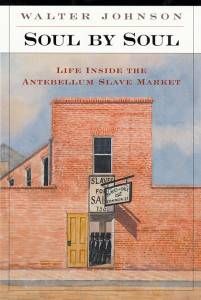
One of the most fundamental features of slavery–but one that remains difficult to wrap our heads around a hundred and fifty years after its abolition–is the literal buying and selling of human beings. Johnson’s Soul by Soul forces us to confront that fact as it examines in excruciating, fascinating, important detail how slave markets worked. What he uncovers, using a huge range of sources, is both more horrifying and more complex than expected.
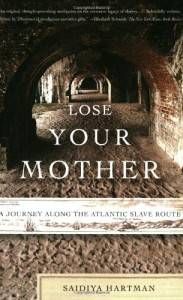
Part memoir, part academic history, part travelogue, Hartman’s Lose Your Mother is a devastating and insightful exploration of both how the slave trade worked and how it still affects the lives of black people around the world today. It’s a book that’s born out of and narrates a complex, circuitous attempt to trace Hartman’s own lineage–a lineage that was ruptured and obscured by the violent displacement of slavery. It’s beautiful and devastating and absolutely crucial.
SEPTEMBER
The first Monday in September is supposed to be a day on which we recognize the contributions of the labor movement in the making of the U.S. This year, instead of the usual half-hearted celebration (often limited to one last barbecue and an end to white shoes), read a couple of books about African Americans and work in the U.S.
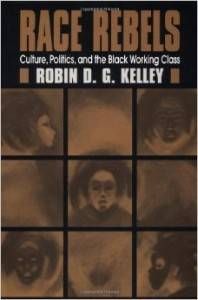
This is a classic, foundational text in black working-class history, and for good reason. With passion and critical insight, Kelley explores various moments in African American history when working-class African Americans fought back. But, and this is where Kelley’s work is especially interesting, he focuses not on the standard institutions, but rather on everyday activities and cultural practices. For example, one of the most interesting topics explored in this book is the history of “pan-toting,” a practice where black domestic workers in the Jim Crow South would take their employers’ leftovers home with them (toting a pan of food back home) as a way of resisting the low pay and low levels of respect offered them in the workplace.
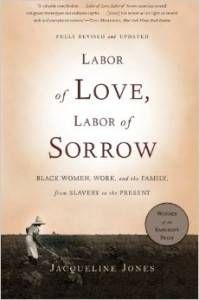
In this book, Jones tracks how black women worked under slavery and after it, exploring how their roles changed as the country changed (or in some ways didn’t) around them. Using a fundamentally intersectional analysis, Jones examines how race and gender worked together to shape expectations for and experiences of black women, with a special focus on the family.
OCTOBER
October is LGBT/queer history month (thirty-one days aren’t enough, either), so this is a great month to read about LGBTQ African Americans and explore black queer thought. For “extra credit,” read some work by Langston Hughes, Alice Dunbar-Nelson, or Richard Bruce Nugent.
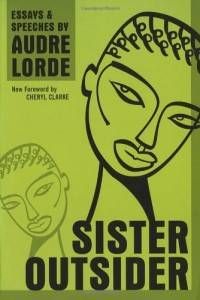
This is one of those amazing books that is a fascinating product of history and at the same time a maker of history itself. These hugely powerful essays and speeches both captured and fueled a crucial moment when queer black women resisted feminist, gay rights, and civil rights movements that excluded, ignored, or undermined the contributions of black women and especially black lesbians–and insisted on intersectionality as they key to justice.
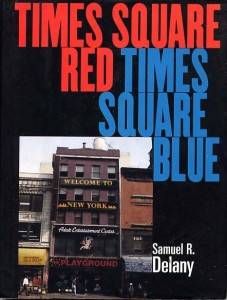
These essays by Delaney–author of science fiction novels and queer black fiction–are about what was lost when Times Square went Disney. Part personal history, part eulogy, part jeremiad against gentrification, Times Square Red, Times Square Blue is a challenging and beautiful argument about how sexuality, race, and class shape cities and our experiences of them. When you’re done with Times Square Red, go explore his fiction. You’ll be happy you did.
NOVEMBER
In the U.S., November is typically a month when we celebrate the colonization of North America. Colonialism was and remains, of course, a source of great violence and suffering in world history–and that’s true of black history, as well. For a second book, pick one from this list of recommended books about Native American history and think about connections between what you learn and what you’ve read so far this year about black history.
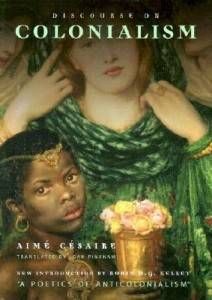
This glorious, small little essay by an author and politician from Martinique, is a stinging and yet beautiful indictment of colonialism. It’s bright and rhythmic (Césaire was a poet, after all), and cuts through the lies that powered colonialism, as well as liberal humanists’ willful ignorance in the face of that depravity: “And I say that between colonization and civilization there is an infinite distance.” It hurts, but it’s supposed to.
DECEMBER
December is a month when many of us take opportunities to reflect on the role religion plays in our lives, whatever we’re observing (or not observing) this time of year. So this month, we’re going to look at religion, with a focus on autobiographies that often use religion to frame memories of crucial periods in African American history.
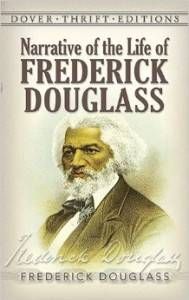
This is such a classic that many of us read it in school. But it’s a classic for a reason–and it’s worth re-reading. Like Audre Lorde’s Sister Outsider, Douglass’s Narrative is a book that captures a moment that was transformed by its publication. He offers a brilliant, passionate glimpse of the horrors of slavery and a clear view of the strength that drove him. In particular, Douglass highlights Christian faith (along with literacy, with which it was linked) as crucial to his story and the story of slavery. Indeed, Douglass’s Narrative is a great way into the complex, somehow both troubling and empowering history of Christianity and bondage in the U.S.
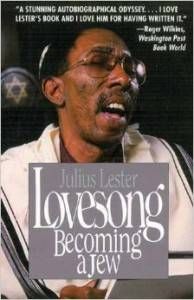
Here’s an unfamiliar, fascinating angle on the conversion narrative: the autobiographical tale of a black Methodist minister’s son who grew up in the South, moved to New York, became an activist, and converted to Judaism. It’s a story about black identity, Jewish heritage, civil rights, and a fascinating life lived across the twentieth century. Lester is the author of many more books–including the Newberry-winning, black-history-focused To Be a Slave–so consider seeking one of them out to continue your exploration.
JANUARY
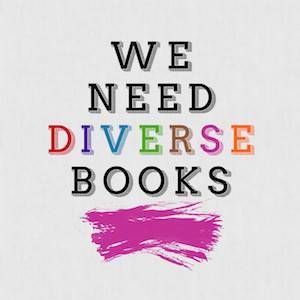
____________________
Follow us on Twitter for more bookish goodness!




